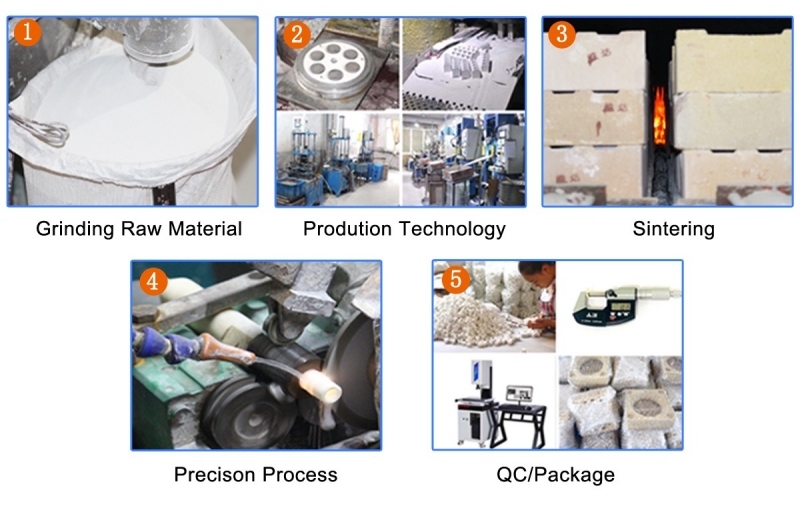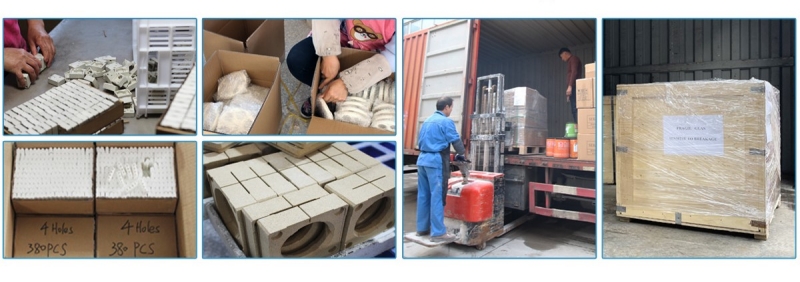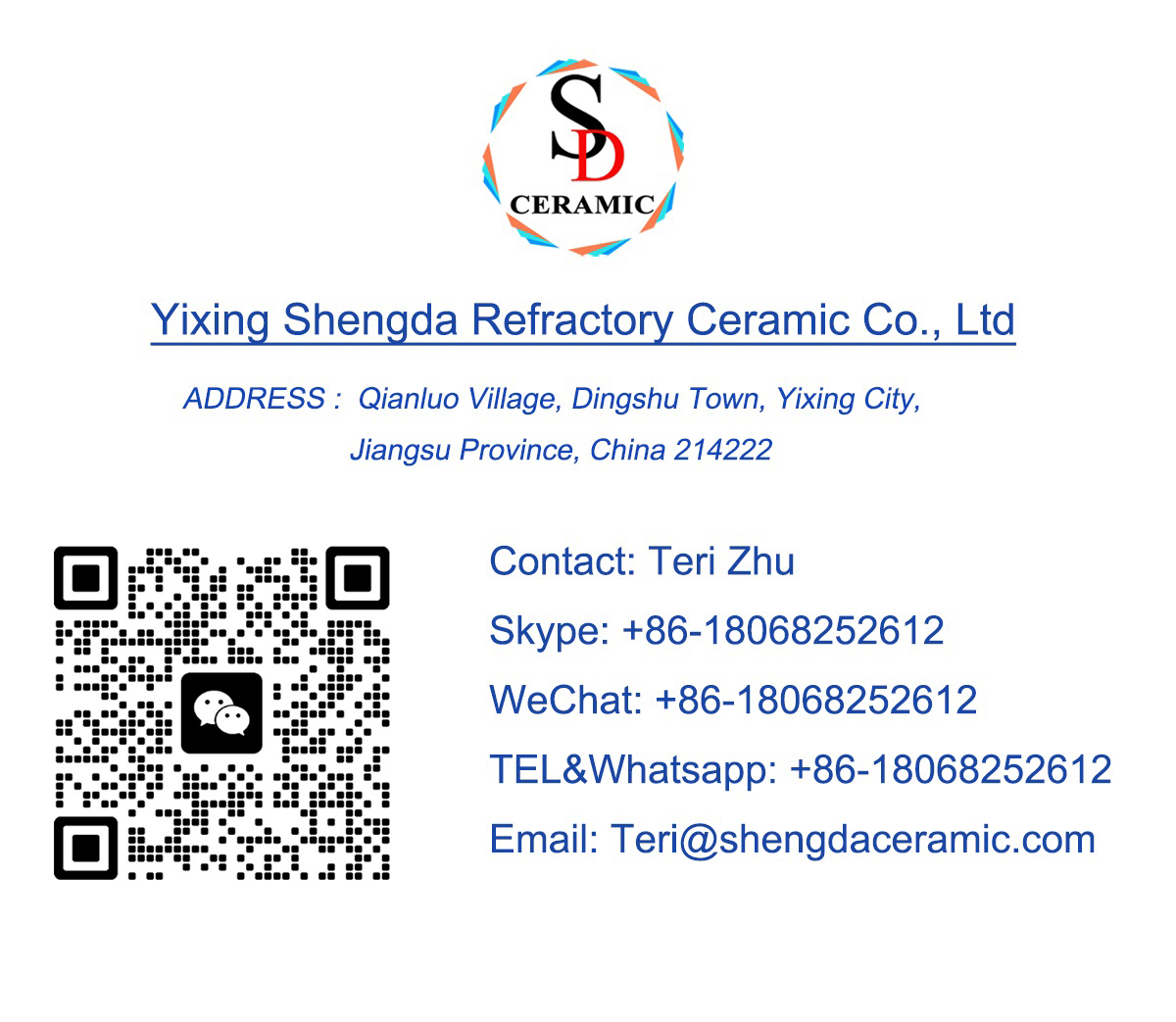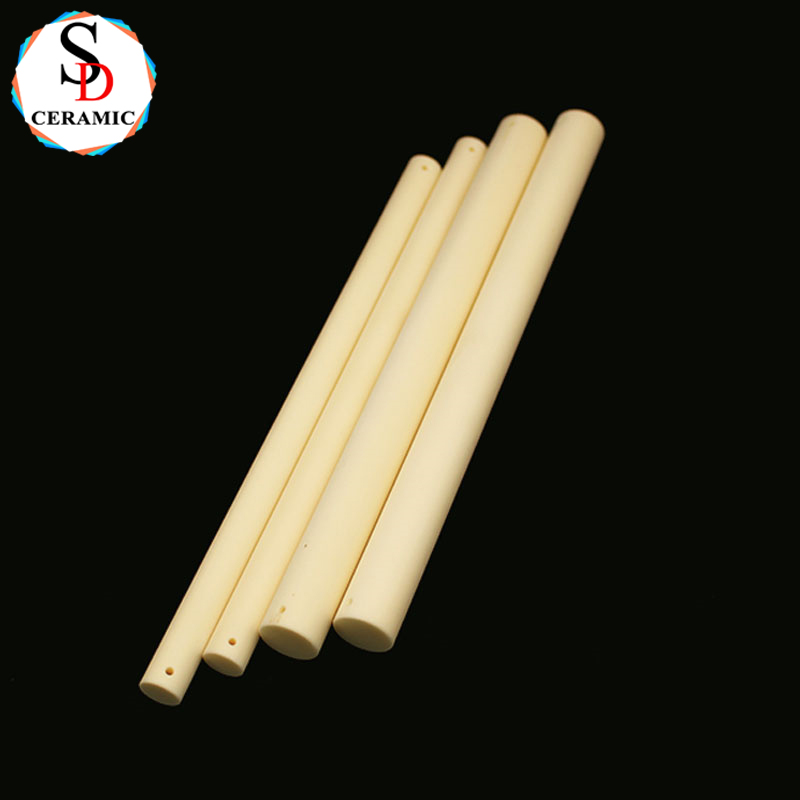Alumina Ceramics are engineered materials with high purity, offering superior mechanical strength, excellent wear resistance, and good thermal shock resistance. They are extensively used in industries such as electronics, automotive, and aerospace for their durability and reliability in demanding environments.
Product Introduction
High-Temperature Resistant Alumina Ceramic Rods: Your Ultimate Solution for Demanding Industrial Applications
Alumina ceramic rods are engineered to excel in extreme environments, offering unparalleled thermal stability, mechanical strength, and corrosion resistance. Whether you operate in high-temperature furnaces, semiconductor manufacturing, or chemical processing, our high-purity alumina ceramic rods are designed to meet rigorous industrial demands. Below, we explore their key features, technical specifications, and real-world applications to demonstrate why they are the preferred choice for engineers worldwide.
|
|
Advantages of Alumina Ceramic Rods
1.Exceptional High-Temperature Resistance
Withstanding temperatures up to 1750°C (3182°F), our alumina rods maintain structural integrity in environments where metals or polymers fail. This makes them ideal for furnace components, kiln furniture, and thermal insulation systems.
2.Superior Mechanical Properties
Boasting a flexural strength of 300-400 MPa and a Vickers hardness of 15-18 GPa, these rods resist wear, deformation, and mechanical stress even under heavy loads.
3.High-Purity Composition (99.5% Al₂O₃)
Our high-purity alumina ceramic rods minimize contamination risks in sensitive applications like semiconductor production or laboratory equipment, ensuring consistent performance.
4.Chemical Inertness
Resistant to acids, alkalis, and corrosive gases, they thrive in chemical processing, oil refining, and wastewater treatment systems.
5.Electrical Insulation
With a volume resistivity of >10¹⁴ Ω·cm at 500°C, these rods are perfect for electrical insulation in high-voltage or high-frequency equipment.
|
|
Real-World Applications of Alumina Ceramic Rods
1. Metallurgical Furnace Components
In steel and glass manufacturing, our industrial alumina rods serve as thermocouple sheaths, support beams, and heat shields. A leading steel plant replaced traditional silicon carbide rods with our alumina rods, reducing downtime by 40% due to their superior thermal shock resistance.
2. Semiconductor Wafer Handling
High-purity alumina ceramic rods are used in wafer transfer systems and CVD (Chemical Vapor Deposition) reactors. Their non-reactive surface prevents contamination, ensuring high yields in chip fabrication.
3. Chemical Reactor Stirring Shafts
A global chemical manufacturer adopted alumina rods as stirring shafts in aggressive acidic environments. The rods outperformed titanium alternatives, extending service life from 6 months to 3+ years.
4. Aerospace Sensor Probes
Alumina rods are used in aerospace temperature sensors due to their lightweight design and ability to operate at extreme altitudes and temperatures (-200°C to 1750°C).
5. Laser and Optical Systems
Their low thermal expansion coefficient (7-8 ×10⁻⁶/°C) ensures stability in laser cutting and optical alignment equipment, minimizing alignment drift.
Main Features:
1. High hardness
2. High heat resistance
3. Good wear resistance
4. High electrical resistivity
5. High corrosion resistance
Technical Parameters
| Properties | Units | Cordierite Ceramic | Mullite Ceramic | 95%Alumina Ceramic | 99%Alumina Ceramic | 99.5%Alumina Ceramic | 99.7%Alumina Ceramic | Silicon Nitride | Zirconia Ceramic |
| Colour | Yellow | White | White | Light yellow | Light yellow | Light yellow | Black | White | |
| Density | g/cm3 | 1.9 | 2.6 | 3.6 | 3.8 | 3.8 | 3.9 | 3.2 | 6 |
| Flexural Strength | Mpa | 30 | 120 | 300 | 350 | 375 | 375 | 800 | 1100 |
| Compressive Strength | MPa | 350 | 500 | 2500 | 2800 | 2800 | 2554 | 2600 | 3000 |
| Modulus of Elasicity(20℃) | Gpa | 40 | 100 | 300 | 350 | 350 | 357 | 290 | 320 |
| Max Use Temperature | °C | 1200 | 1300 | 1400 | 1500 | 1500 | 1760 | 1300 | 1050 |
| Thermal Condutivity | W(m.K) | 1.3-1.8 | 2~6 | 20 | 30 | 30 | 33-38 | 25 | 3 |
| Thermal Expansion Cofficient | 10-6/°C | 2.5-3 | 2.5-3 | 7.5 | 8 | 8.2 | 8.2 | 3 | 10 |
| Thermal Shock Resistance | △T℃ | 300 | 150 | 140 | 150 | 200 | 223 | 600 | 250 |
| Dielectric Strength | KV/mm | - | - | 15 | 18 | 18 | 23.4 | 14 | 15 |
| Dielectric Constant | Er | 8 | 8 | 9 | 9.2 | 9.2 | 9.84 | 9 | 26 |
Production process
1. Grind and crush the raw materials to be slurry or powder
2. se-different method to making the slurry or powder into semi-finished products
3. Put the semi-finished products into the kiln for dewaxing and sintering;
4. After forming and sintering, Ceramic Sleeves products can also be processed by subsequent CNC precision machining according to the drawing requirements. Then Q/C test.
5. Finally package Ceramic Sleeves by bubble paper or cartons and place it on tray for delivery

Certifications

Our customers

Packaging and shipping

Transport

FAQ:
Q: Do you have the products in stock?
A: Some standard produce have in stock, such as ceramic band heater insulator; bobbin heater insulator and ceramic connector. But it needs to check according to your requirement.
Q: How do you pack the goods?
A: Our standard packaging is carton, we can customize it as per your requirement as well.
Q: How many days do you finish the sample?
A: Usually 15 business days (Including 8days for making furnaces and 7days for producing samples)


Request A Quote Today
Whether is a product enquiry or technical help, please send messager here, our team will respond within 8 hours.
Subject : High-Temperature Resistant Alumina Ceramic Rods

If you have any questions or need help, feel free to contact with our team.
Phone
+86 18068252612
Location
Qianluo Village, Dingshu Town, Yixing City, Jiangsu Province, China
Welcome to subscribe to our email message!


Copyright © Yixing Shengda Refractory Ceramic Co., Ltd. All Rights Reserved | Sitemap | Powered By 